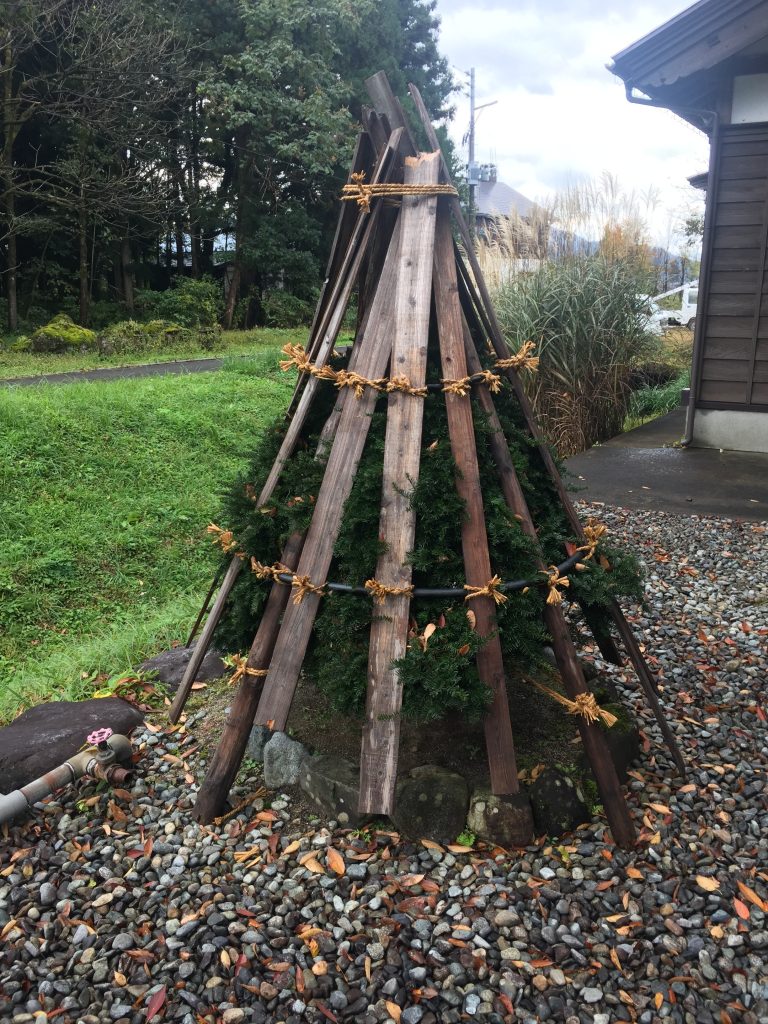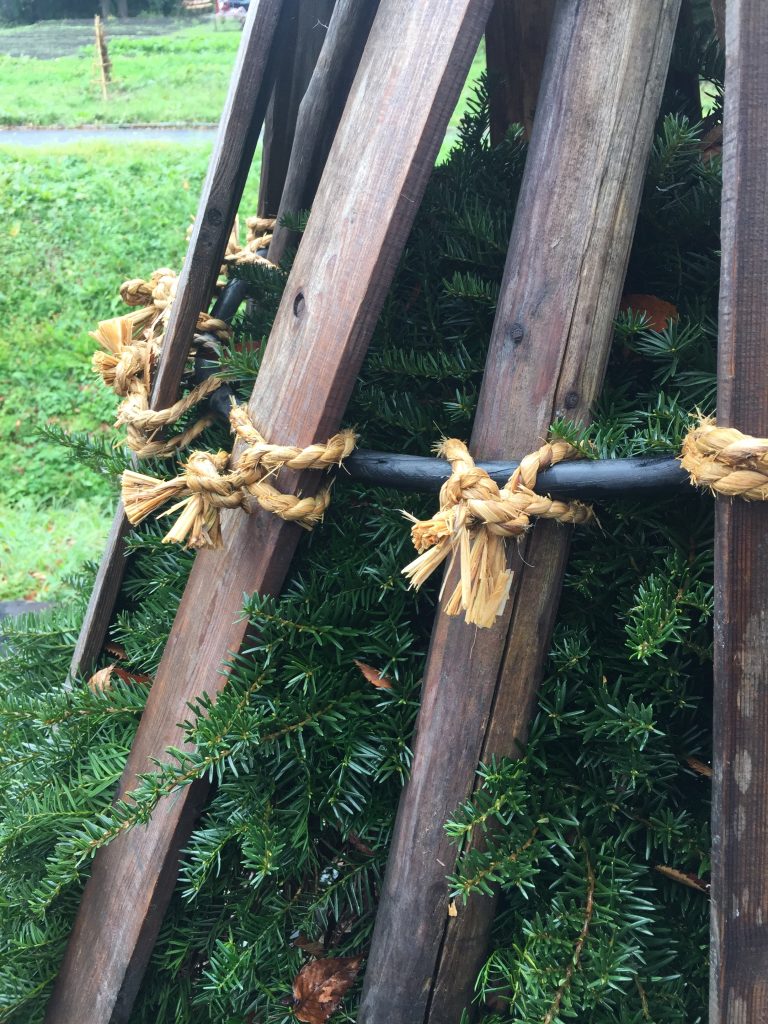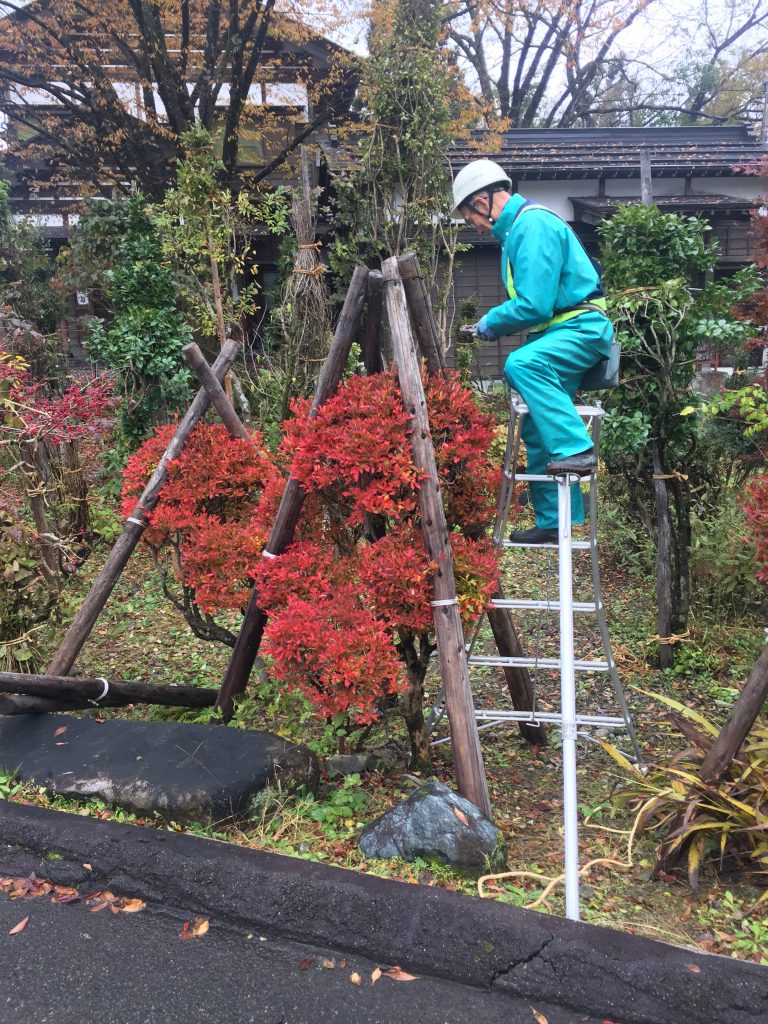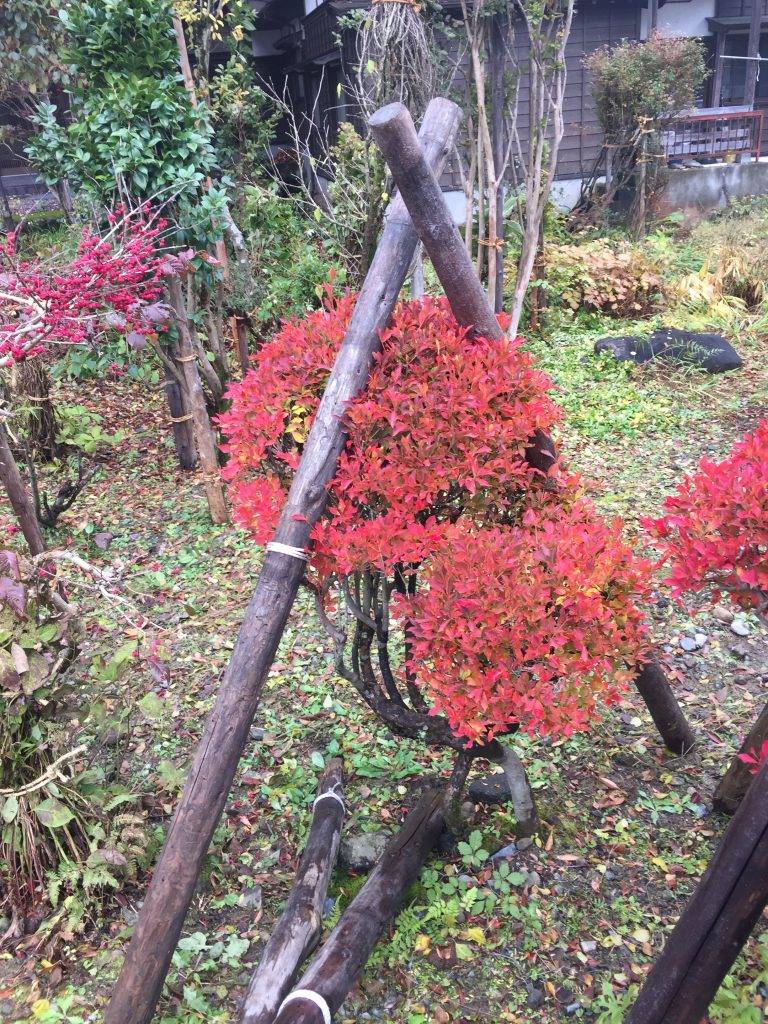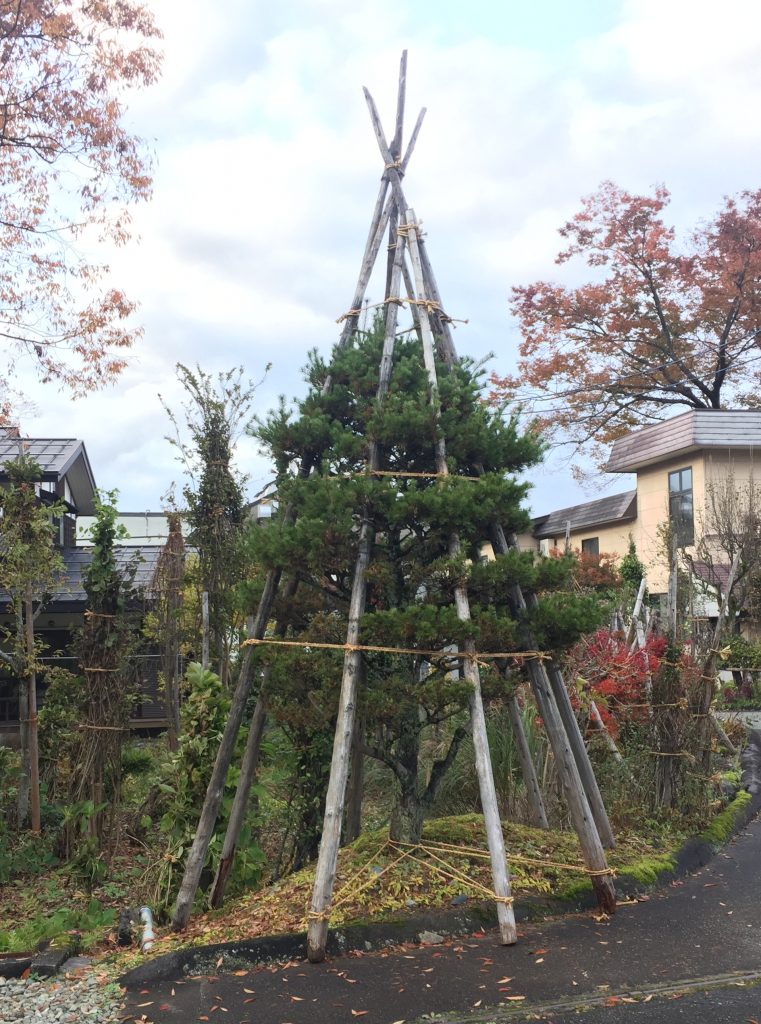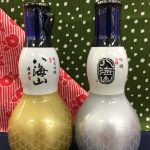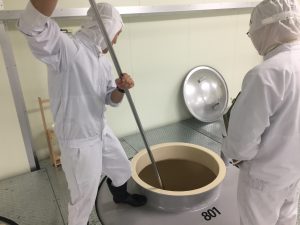
Vertical Rice Milling machine.
When you learn something as complex as sake brewing as I am, it’s good to start at the very beginning. For me, that means my time with Hakkaisan starts with sake rice milling. To understand why sake rice is milled at all, it is important to know that sake rice is somewhat different from eating rice. The outer layers of the sake rice grain contain more of the fats and proteins, while the starch is more concentrated in the core of the grain. The starch is what can be converted to sugars and subsequently to delicious sake. Rice milling or polishing allows us to isolate the starch. This starchy core of the rice grain is called shinpaku, which means “white heart”.
The percentage to which the rice is milled is called seimaibuai and this percentage is also a factor in the sake classification system. More milling to a smaller size can qualify as a more premium grade of sake. Rice is milled in the “Seimaikoujo” or Rice Milling Facility. Hakkaisan has 6 rice milling machines which run pretty much 24/7 and each machine holds just under 2 tons of genmai (whole grain sake rice).
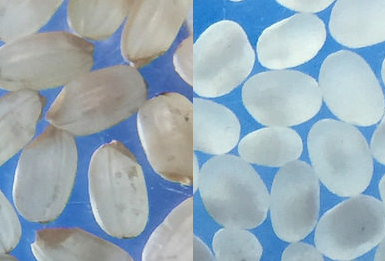
Before and after rice milling.
How does it work? Fed by gravity from above, the sake rice grains cascade over the sides of the spinning wheel where the friction scrapes a bit of the outer rice layer away. The rice grains are transported back to the top and cascade over the wheel again and again until the desired rice milling rate is achieved.
One of the most striking things about our rice milling machines is how tall they are… about 3 stories high! The constant hum of the machines can be heard in the background. Rice arrives from the farmers to the milling facility in heavy 30 kilo (66lbs bags). These bags are untied and poured into the milling machine grain feeder. The rice is then processed in the mill for various lengths of time depending on the desired final milling rate. For example, a milling rate of 50% rice grain remaining takes approximately 48 hours.
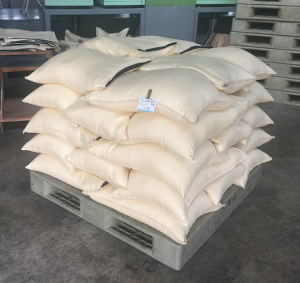
After milling rice is bagged up, stacked and is ready for resting.
When the rice is milled to a smaller size, it naturally takes a longer time, but one reason for this is that the milling wheel is changed to a lower speed. As the rice grain gets smaller and smaller, it becomes more fragile and more prone to cracking, so it must be handled more delicately.
Immediately after milling, the rice is re-bagged into 30 kilo bags and allowed to rest and cool slowly. The friction from the milling process leaves rice noticeably warm to the touch. From this point on, cooling the rice slowly is very important as rapid chilling at this stage can crack the rice. After up to two weeks of resting, the milled rice is ready to head into the kura for processing. Last but not least, each batch of rice is always tested for rice grain moisture content and individual rice grain average weight both before and after milling.
My big takeaway is that although the actual milling is done by a machine, there is a lot of testing and hands-on attention to detail and coordination that is needed to successfully manage this process and produce the best milled sake rice!
 Timothy Sullivan, Hakkaisan Brand Ambassador
Timothy Sullivan, Hakkaisan Brand Ambassador
